The Arch of Constantine is positioned between the Roman Forum and the Colosseum in Rome, Italy. It was built around 315 AD to celebrate Constantine’s victory over Maxentius in 312 AD.
The Arch of Constantine is one of three surviving ancient Roman triumphal arches in Rome. The other two are the Arch of Titus built in 81 AD and the Arch of Septimius built in 205 AD. Both of these arches are part of my post on the Roman Forum which can be read by clicking on the photo link at the bottom if this post. Most of the triumphal arches were built between 27 BC and 476 AD. During the 4th century there were 36 triumphal monuments in Rome.
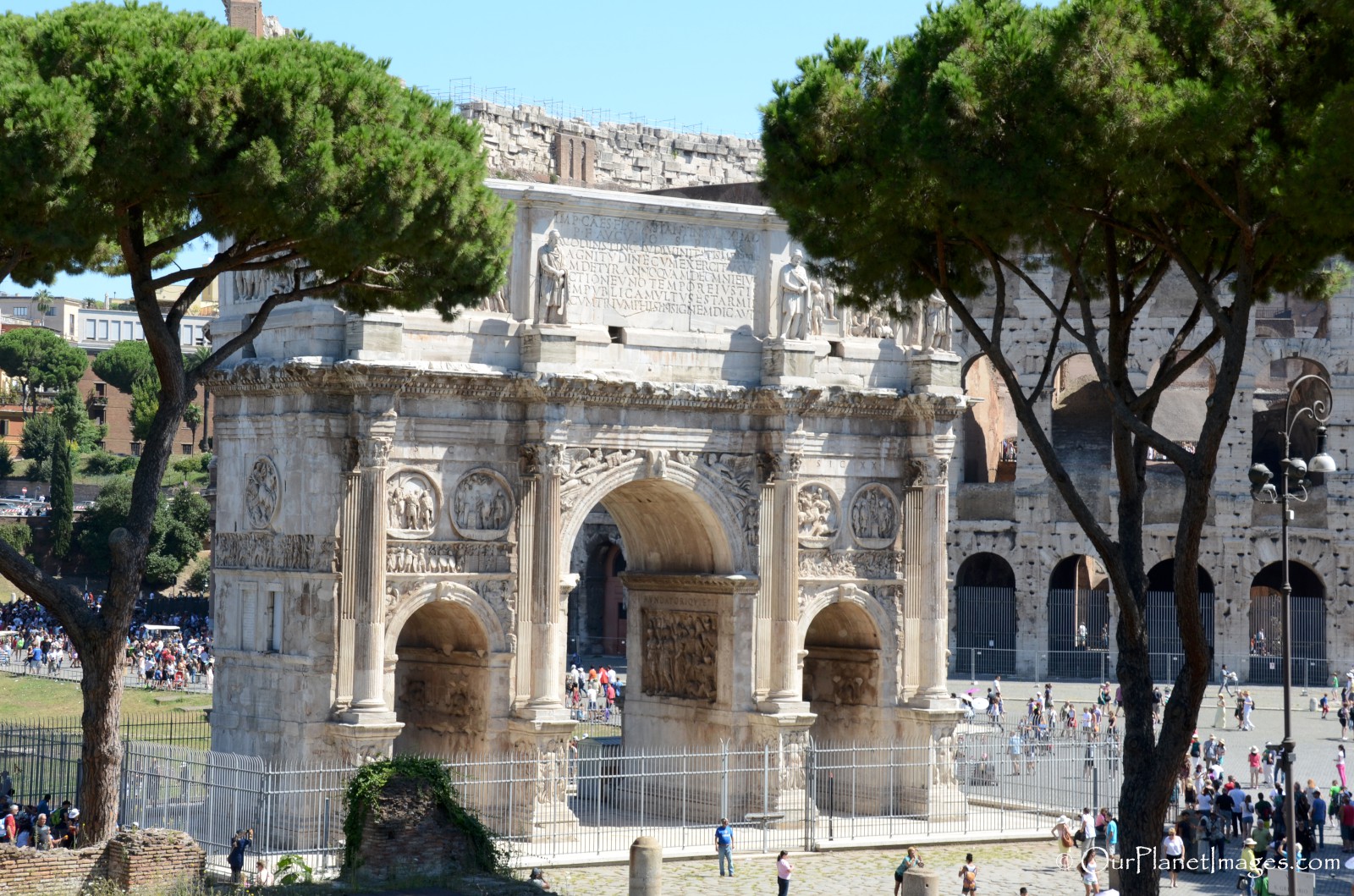
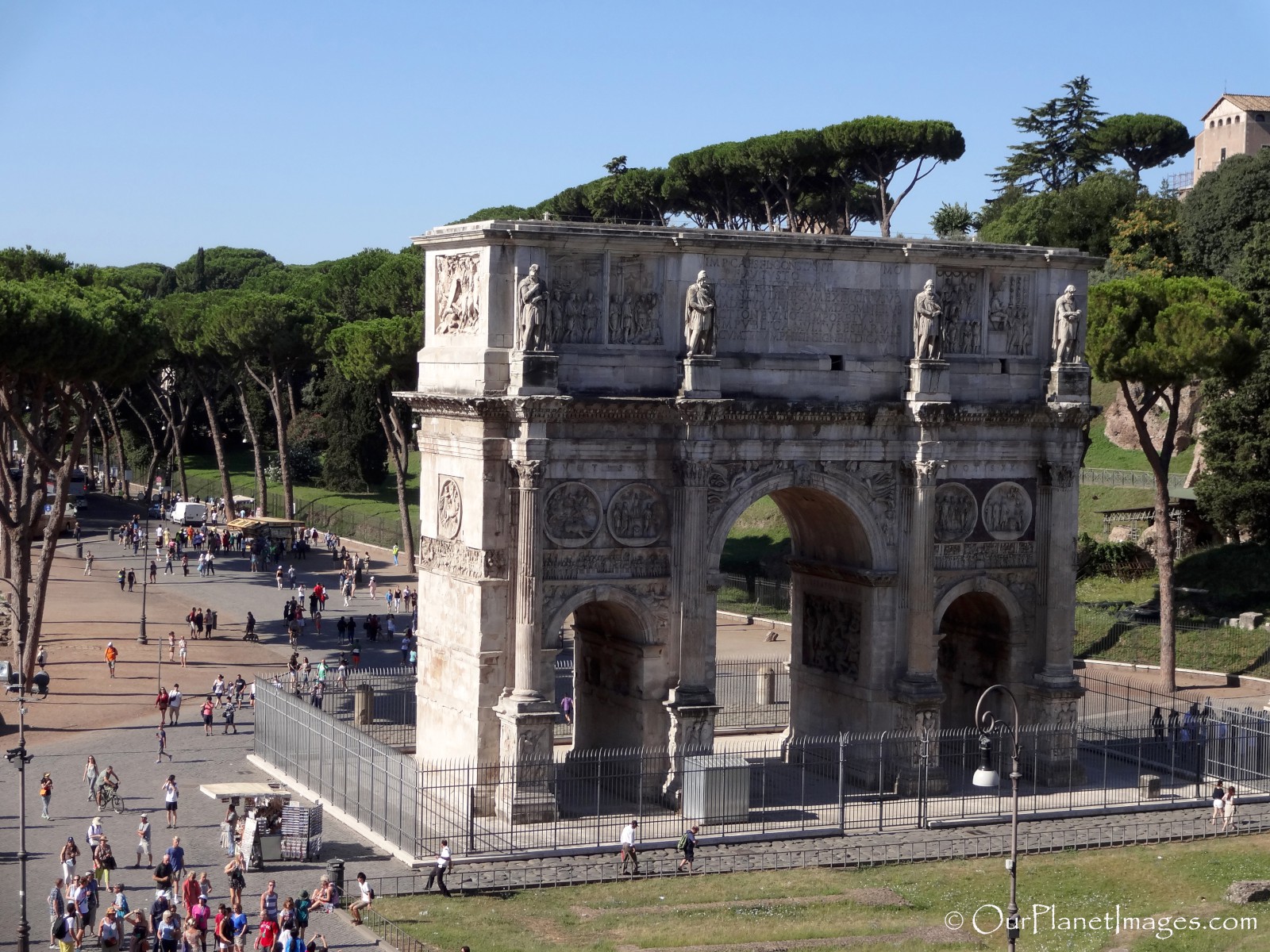
The arch of Constantine is the largest surviving Roman triumphal arch which measures 21 meters high and 25.7 meters wide. It is constructed with grey and white marble with two small arches and a larger center arch. The arches are framed by four columns on each side of the monument.

Located on top of each of the eight columns are statues. Between the statues and above the smaller arches are four reliefs of the life of Constantine.
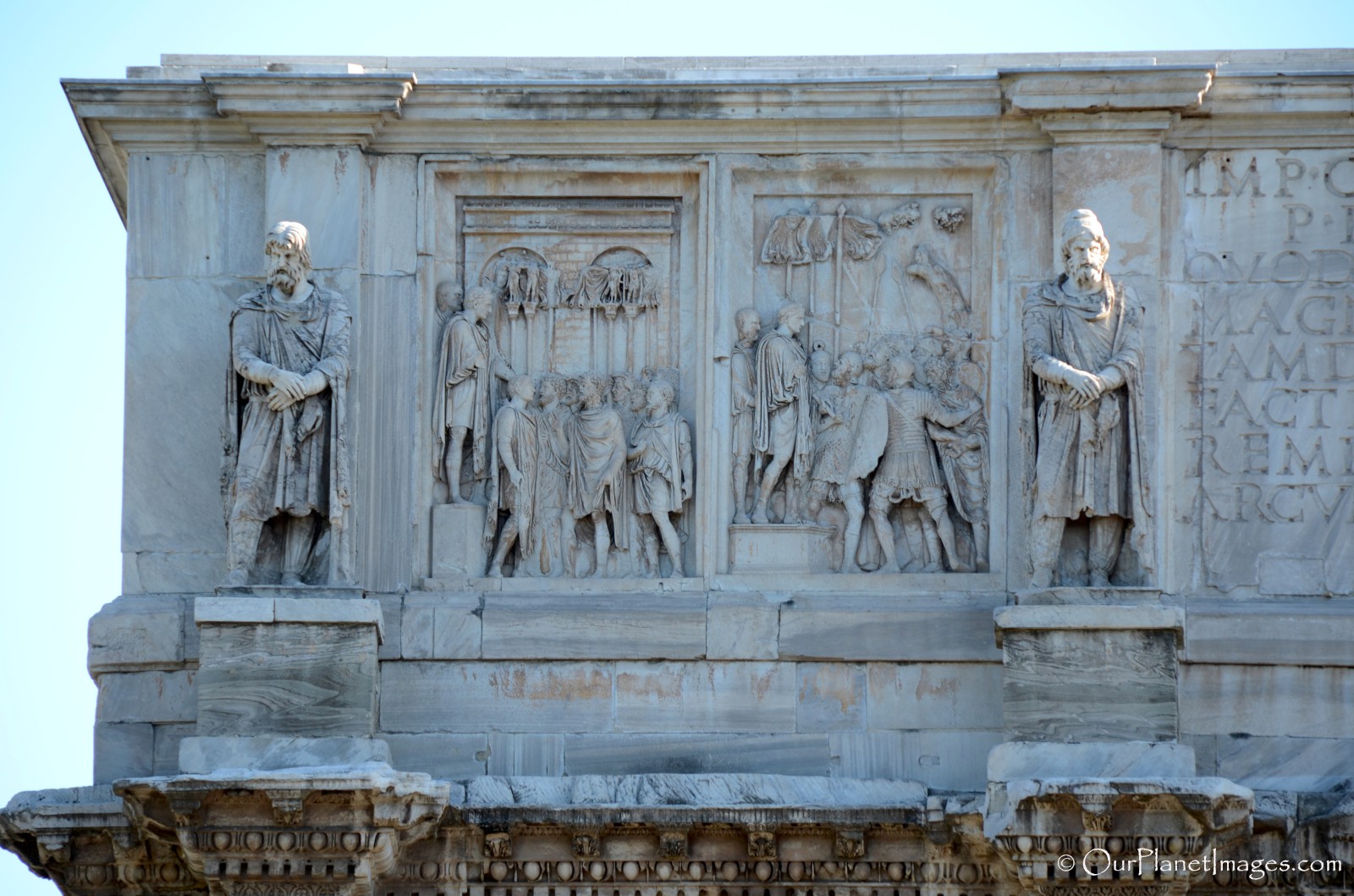
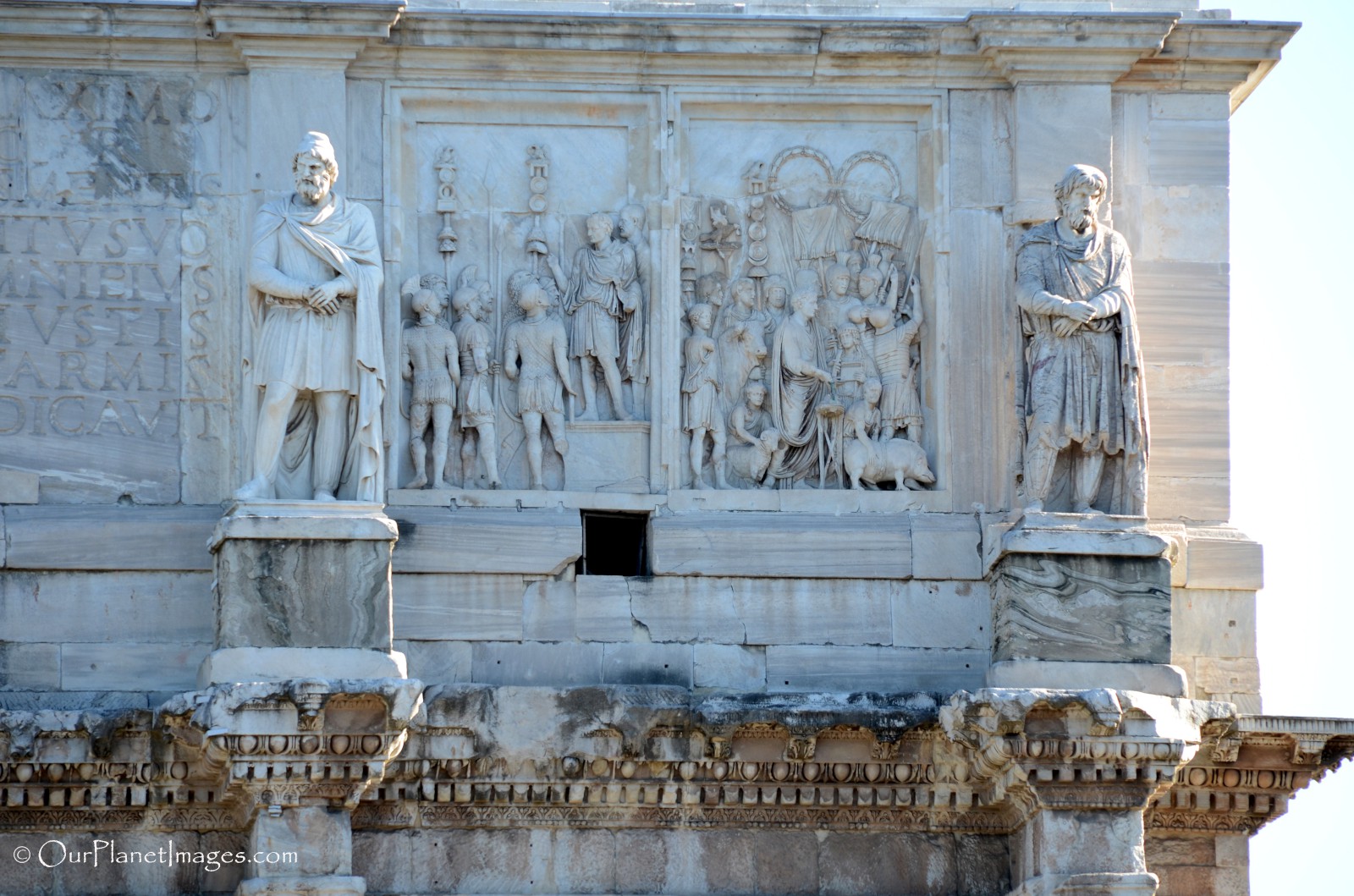
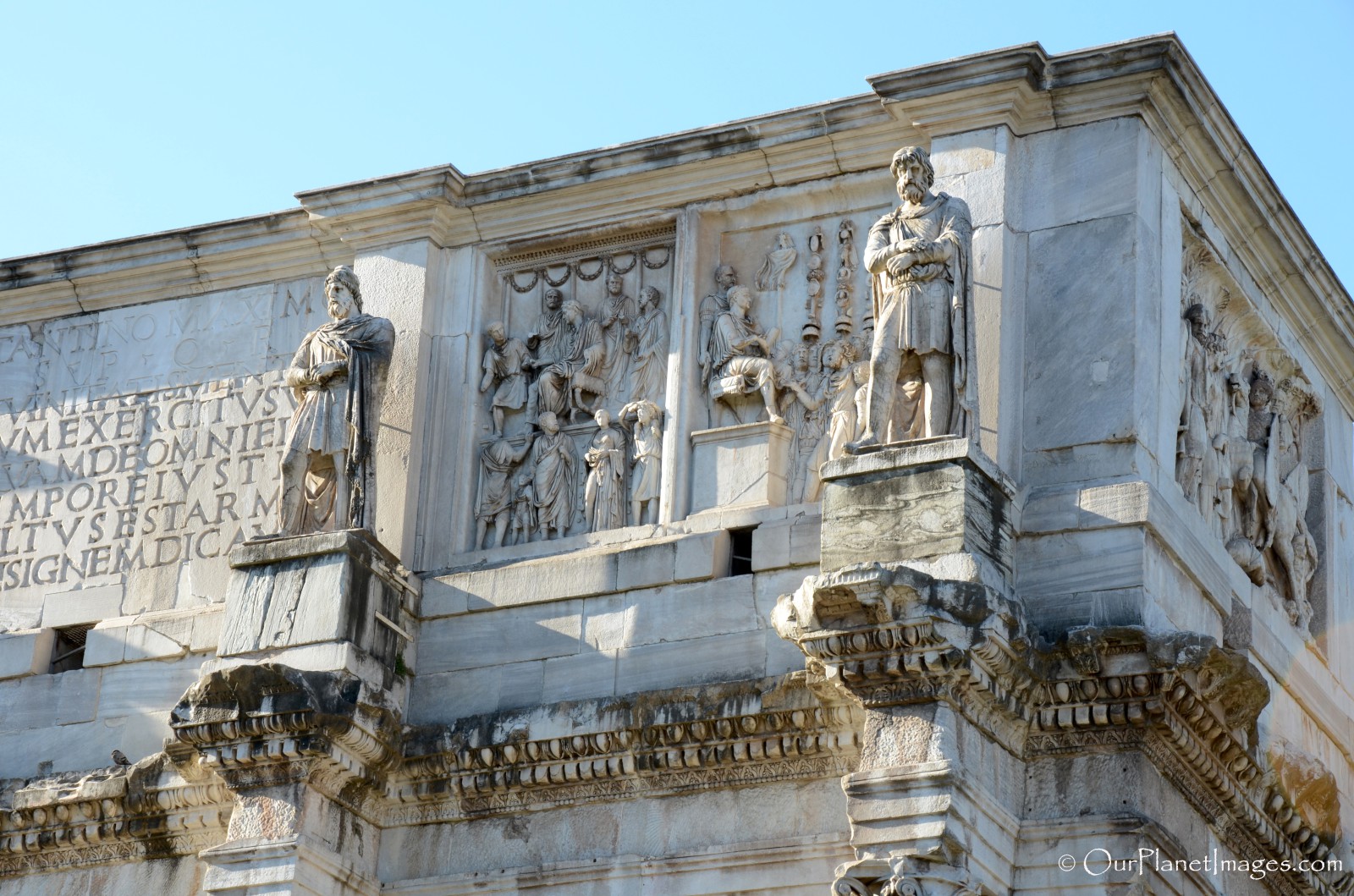
In addition to the four main reliefs are eight smaller circular reliefs showing examples of hunting and sacrifice scenes.
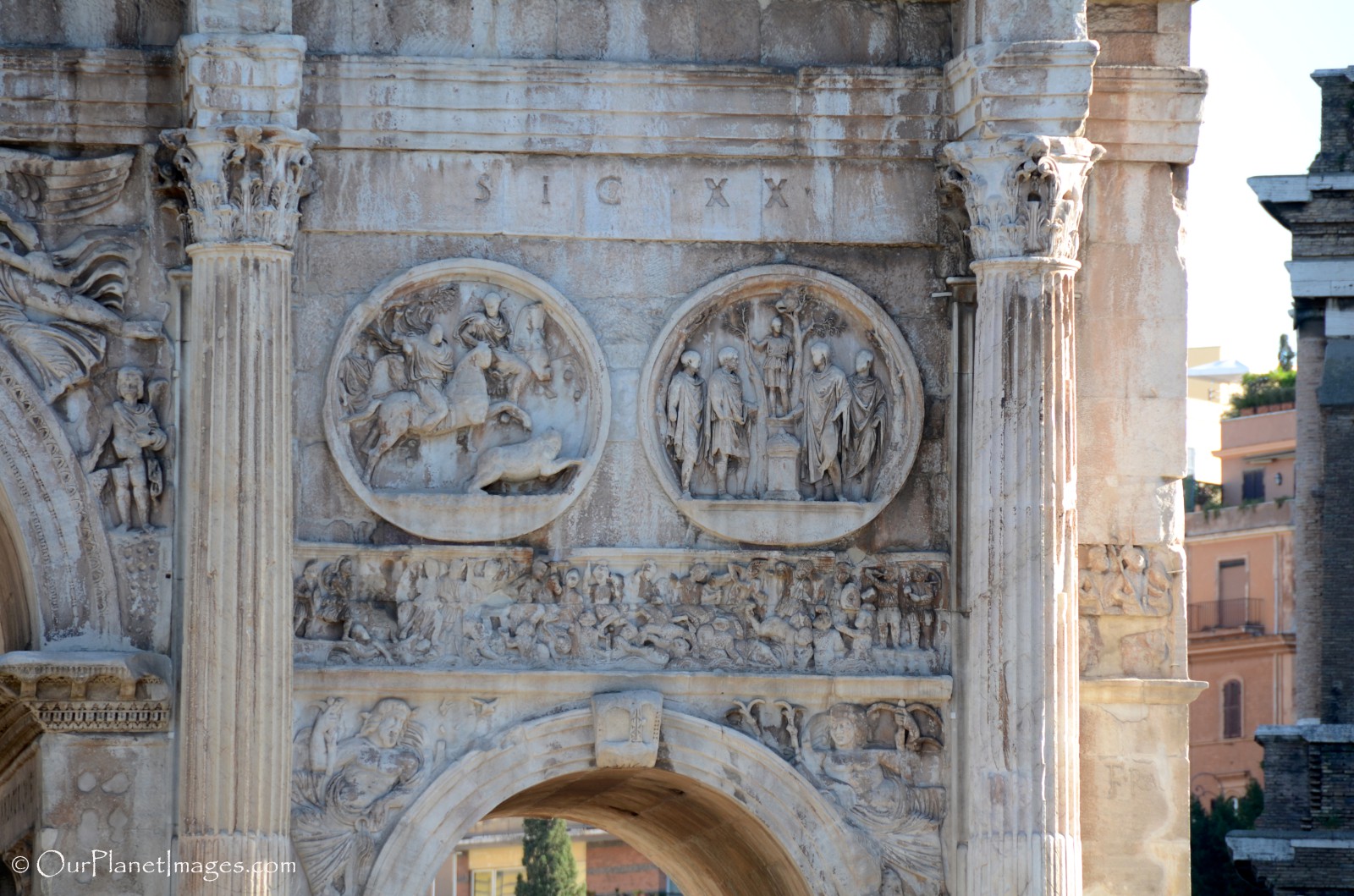
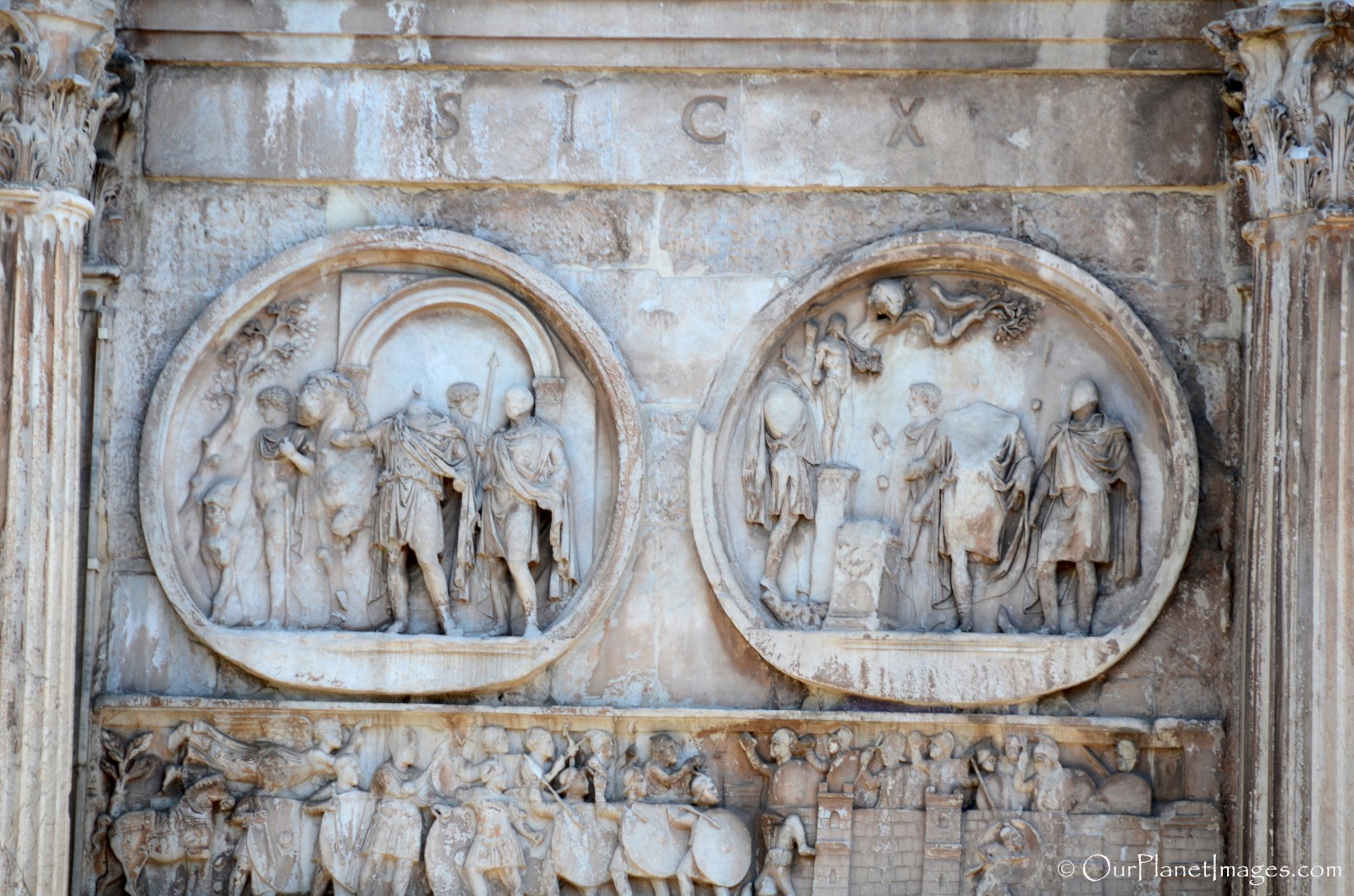
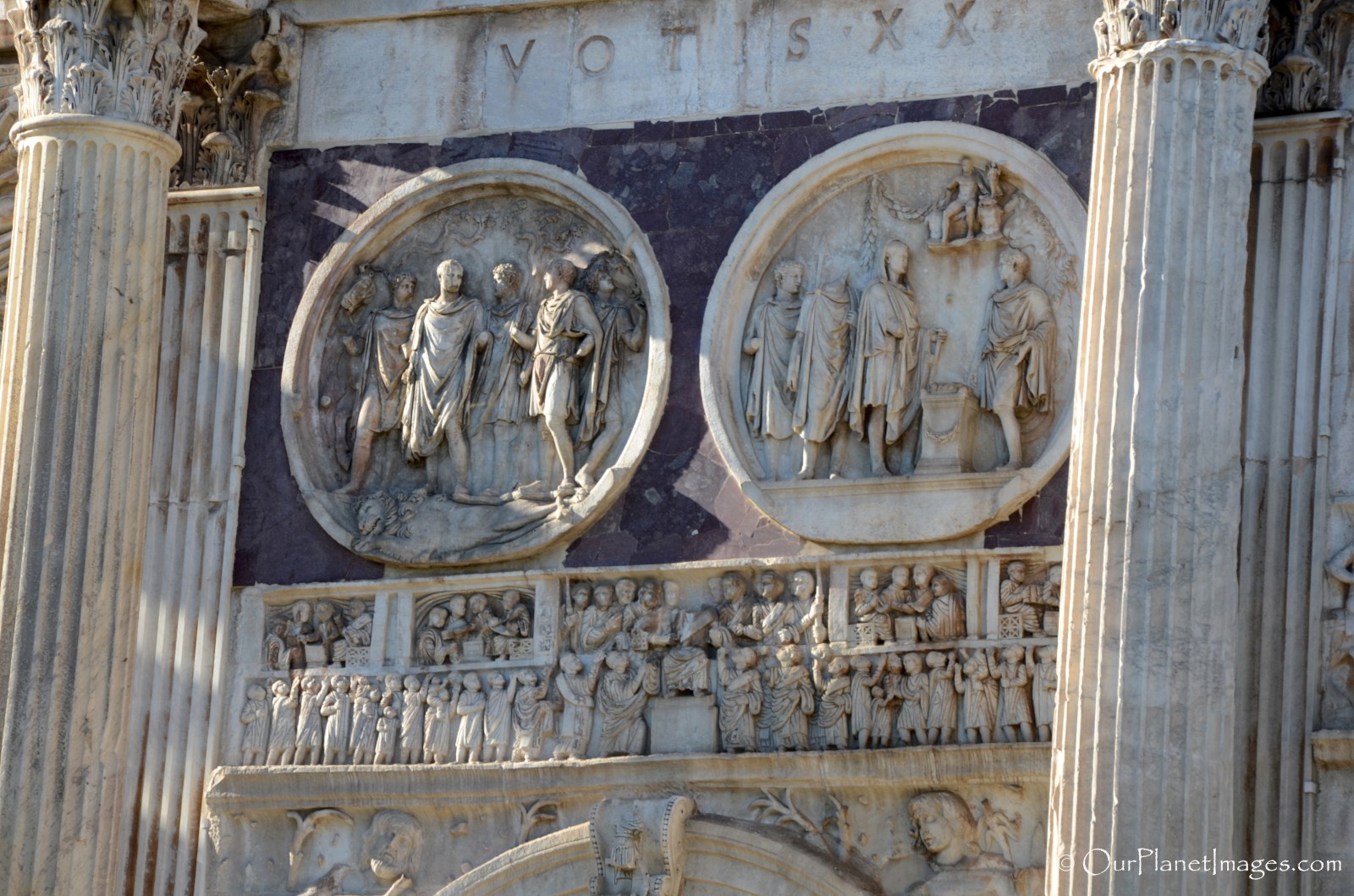
In the center of the monument above the center arch is and inscription proclaiming Constantine to be the liberator of Rome.
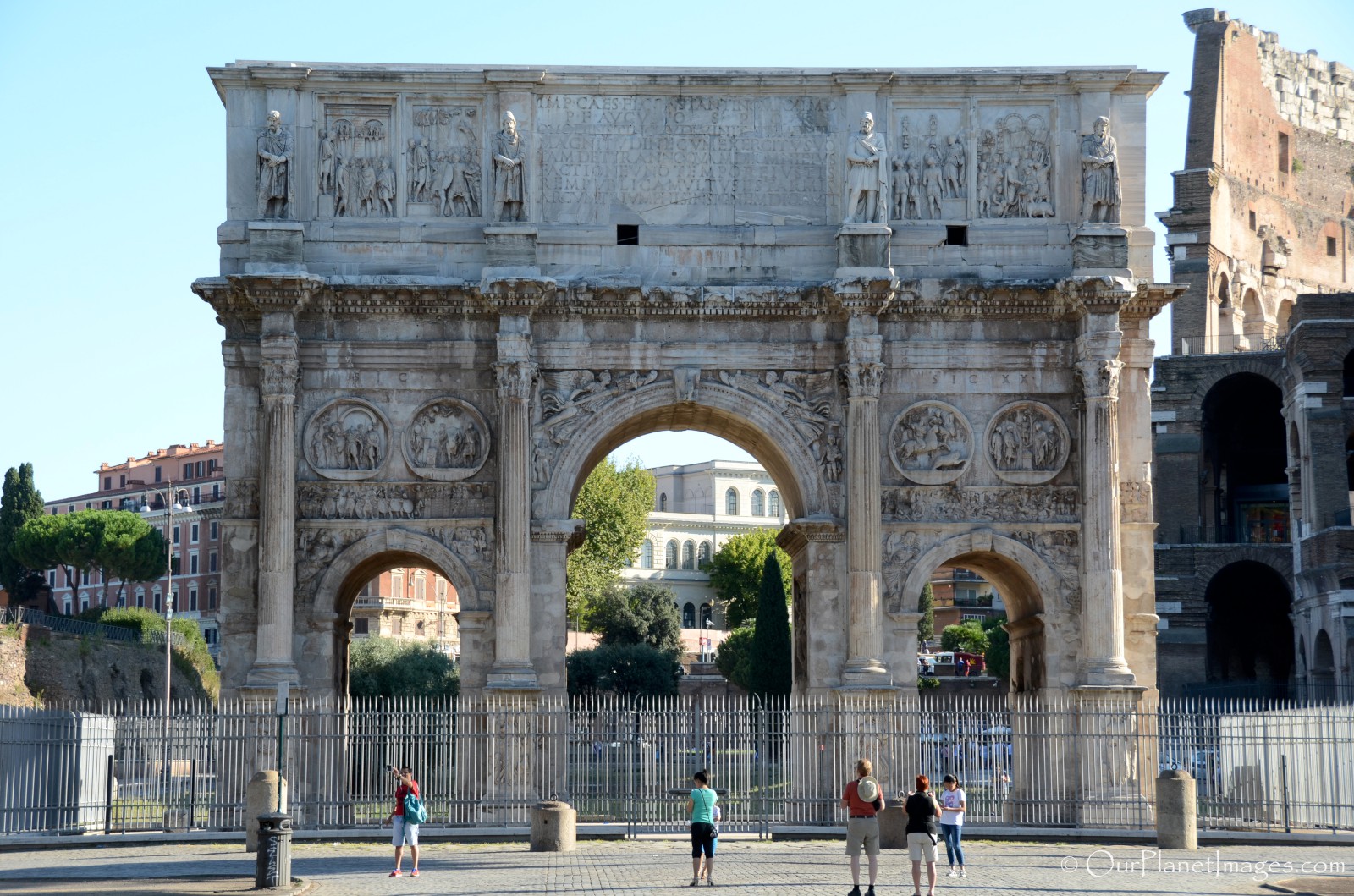
There are also two reliefs located inside the passageway of the center arch.
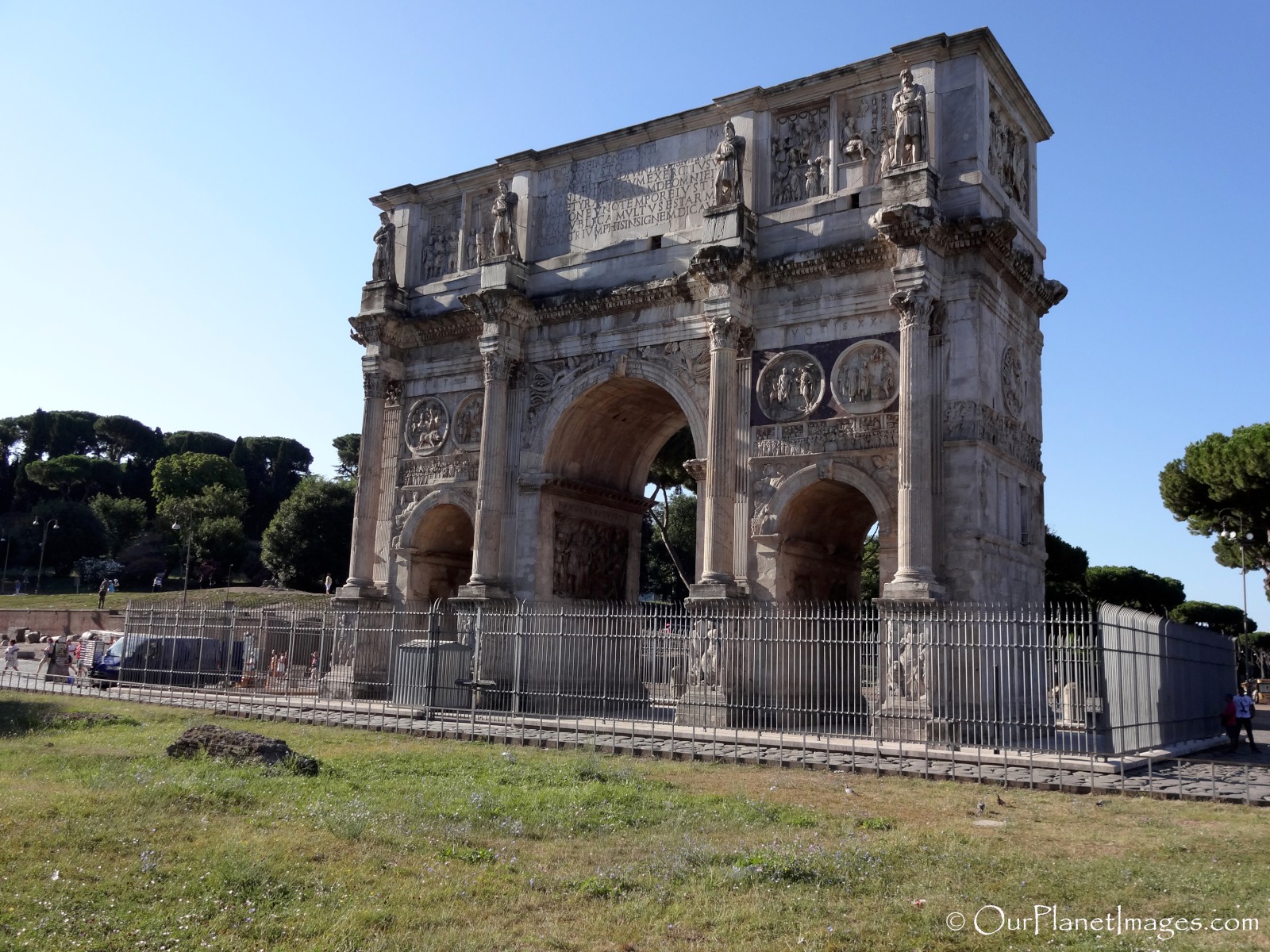
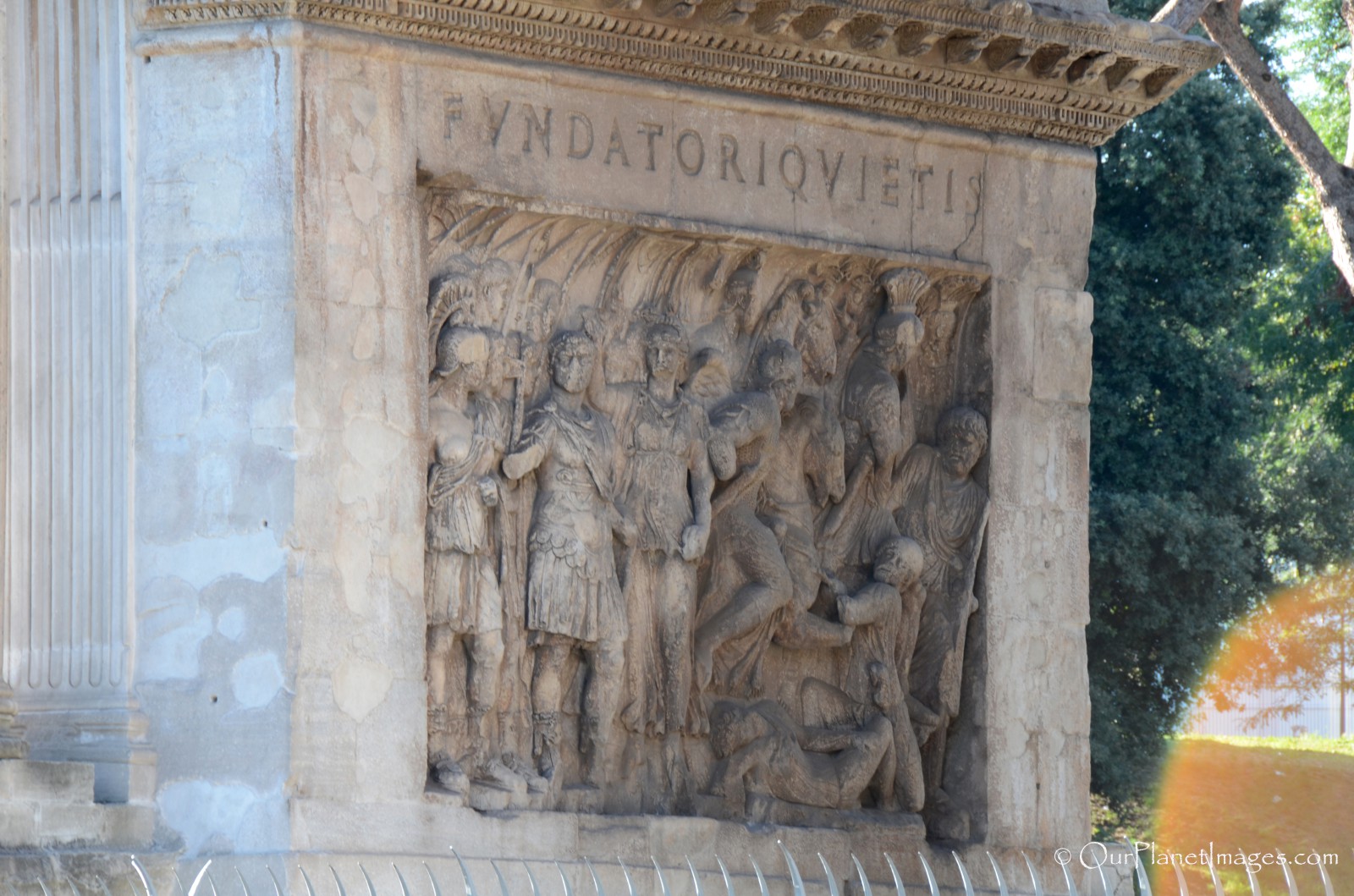
Similar to the front and back of the monument there is a large relief on each side with a small circular relief beneath the large relief.
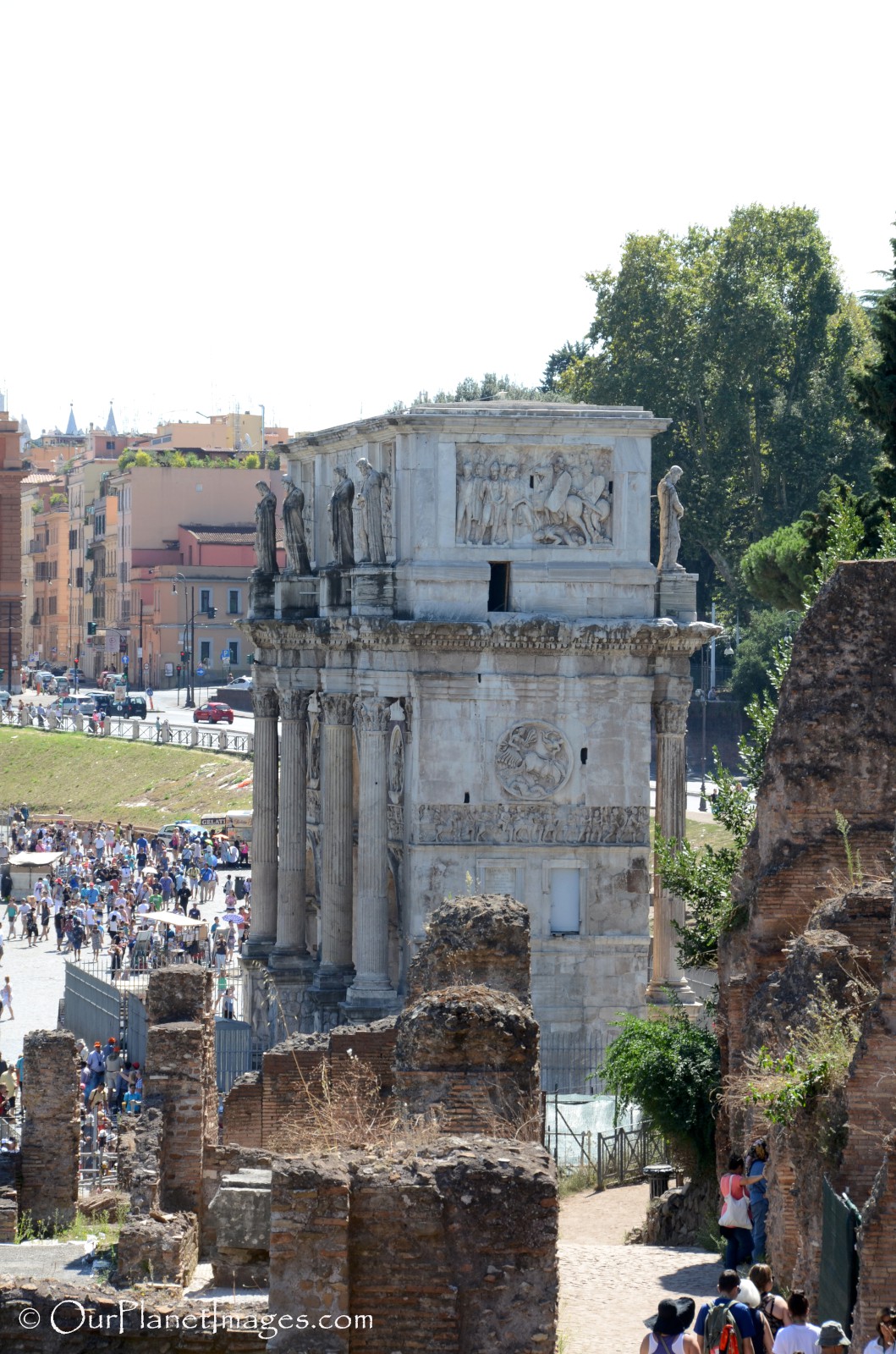
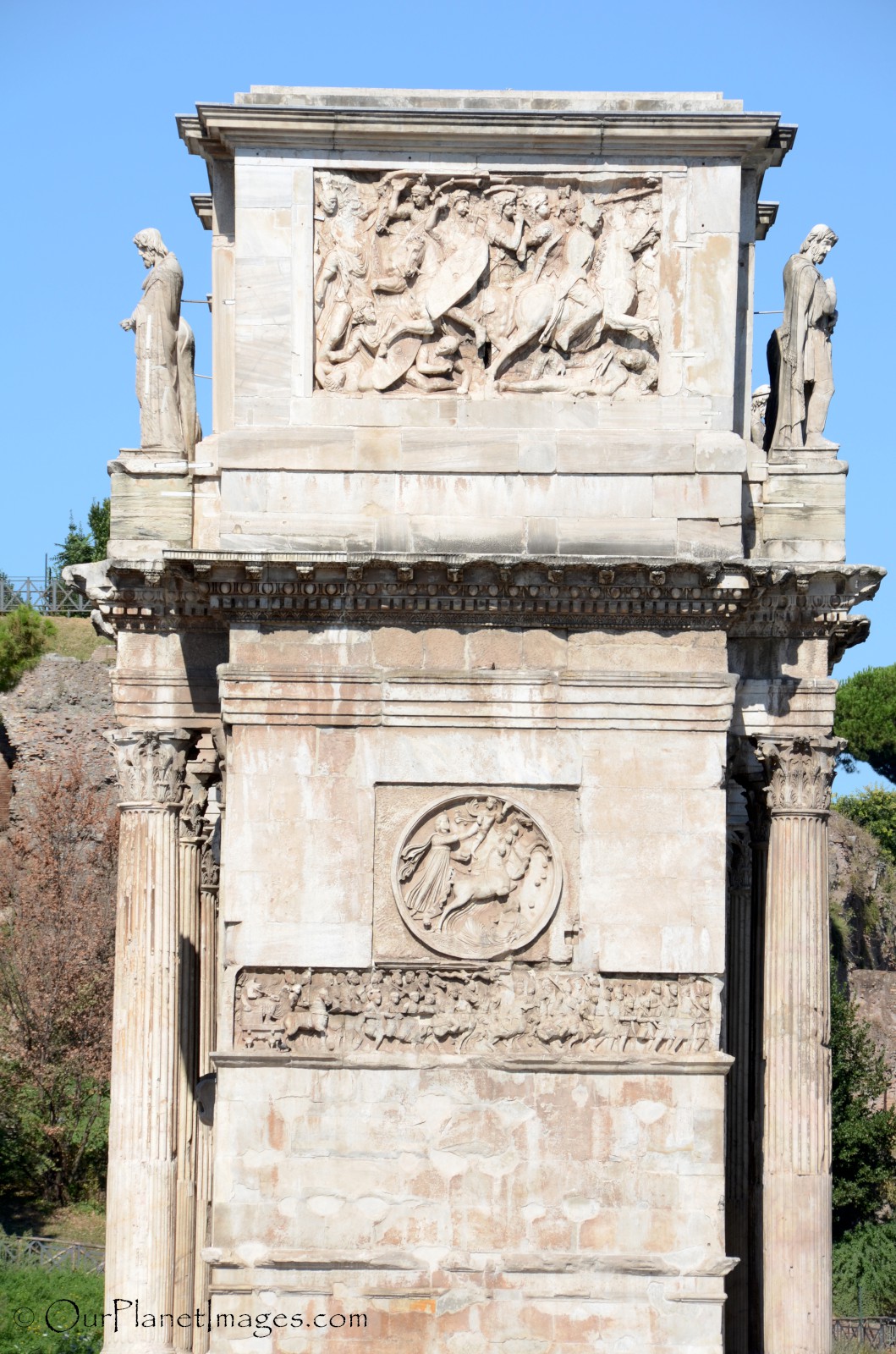
The Dust on My Shoes
I have seen many arched gates in my travels. In Europe, I have seen the Arc de Triomf in Barcelona and the Arch de Triumph in Paris but these style arched gateways are not limited to Europe. In Asia, I have seen similar style arched entrances at the Gyeongbokgung Palace in Seoul and at The Citadel in Hue Vietnam. The difference is that in Europe they are intended as monuments and in Asia they were used as guard stations and entrances into secured areas.
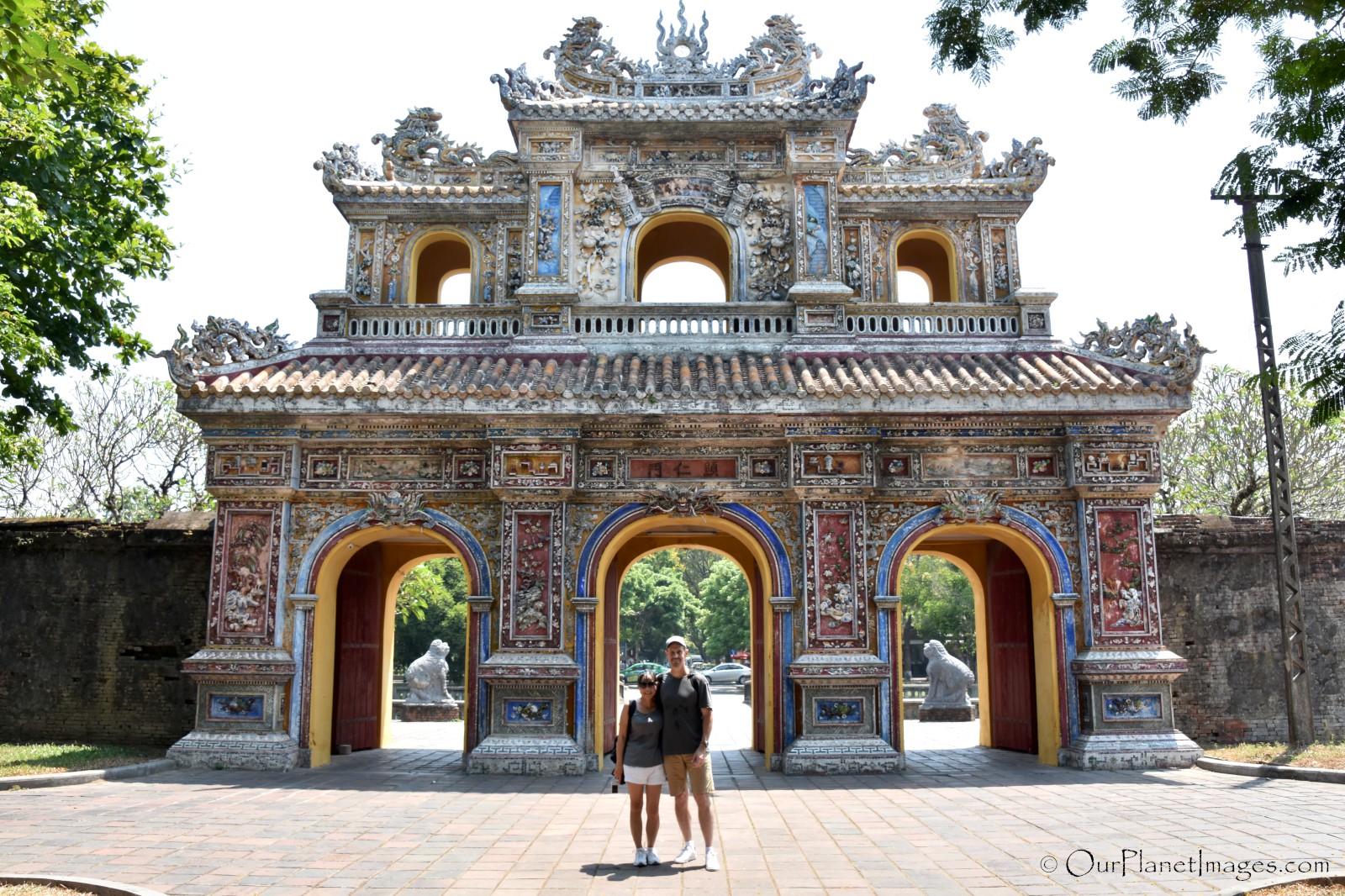
The Citadel entrance gate in Hue, Vietnam
Regardless of the purpose, arched gateways make a statement. They are big and they get people’s attention. The Arch of Constantine was built to tell a story about the victory of a historic battle and to proclaim Constantine as the Roman Emperor.
The Arch of Constantine is the best preserved of the Roman arches. I liked the illustrative reliefs that captured symbolic scenes from the events of the time and the round reliefs were a unique feature that I had not seen before.
Monuments are easy to overlook when visiting foreign countries but they are a good way to learn about the history of the places that you are visiting.
Related Posts

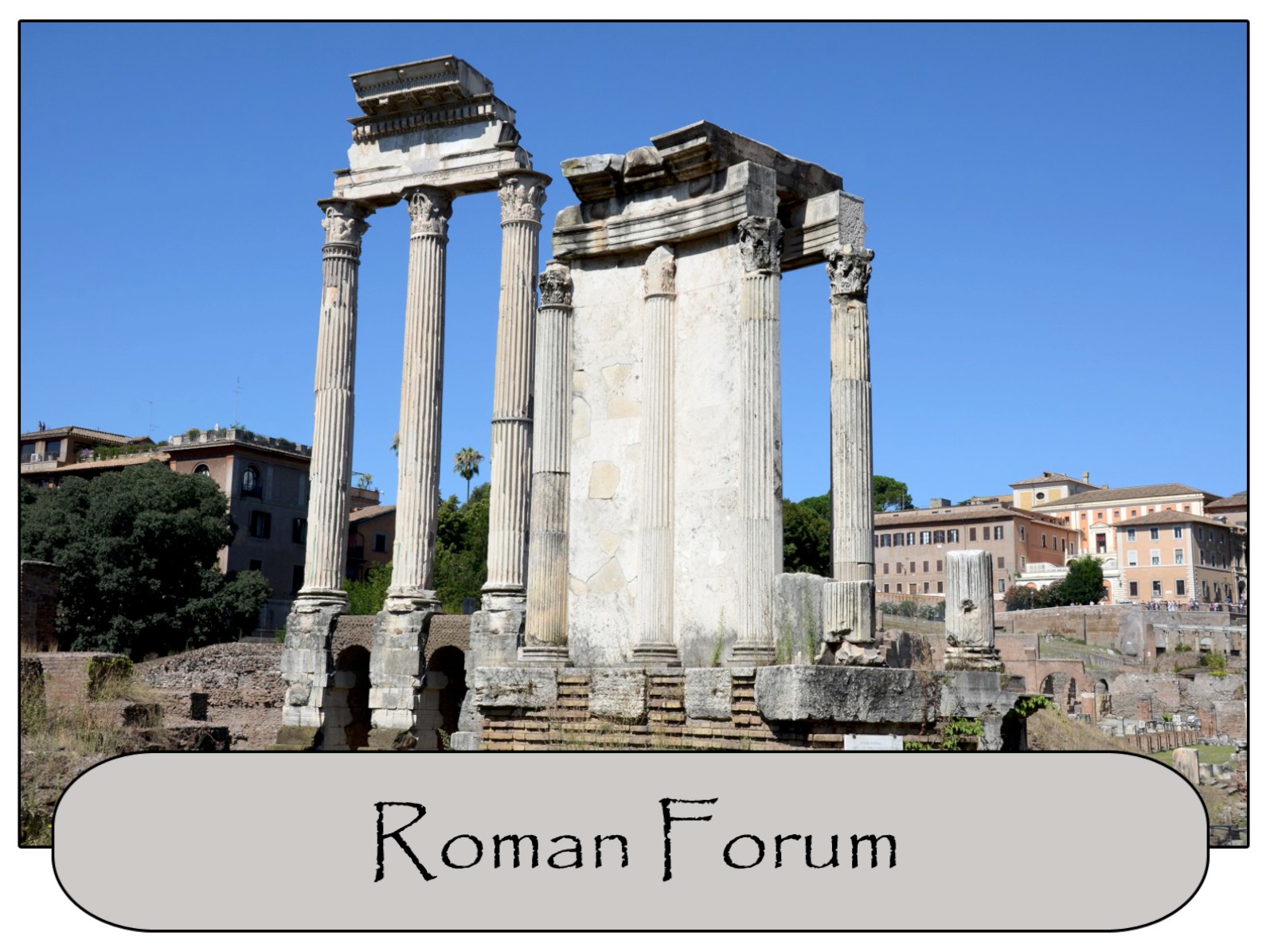
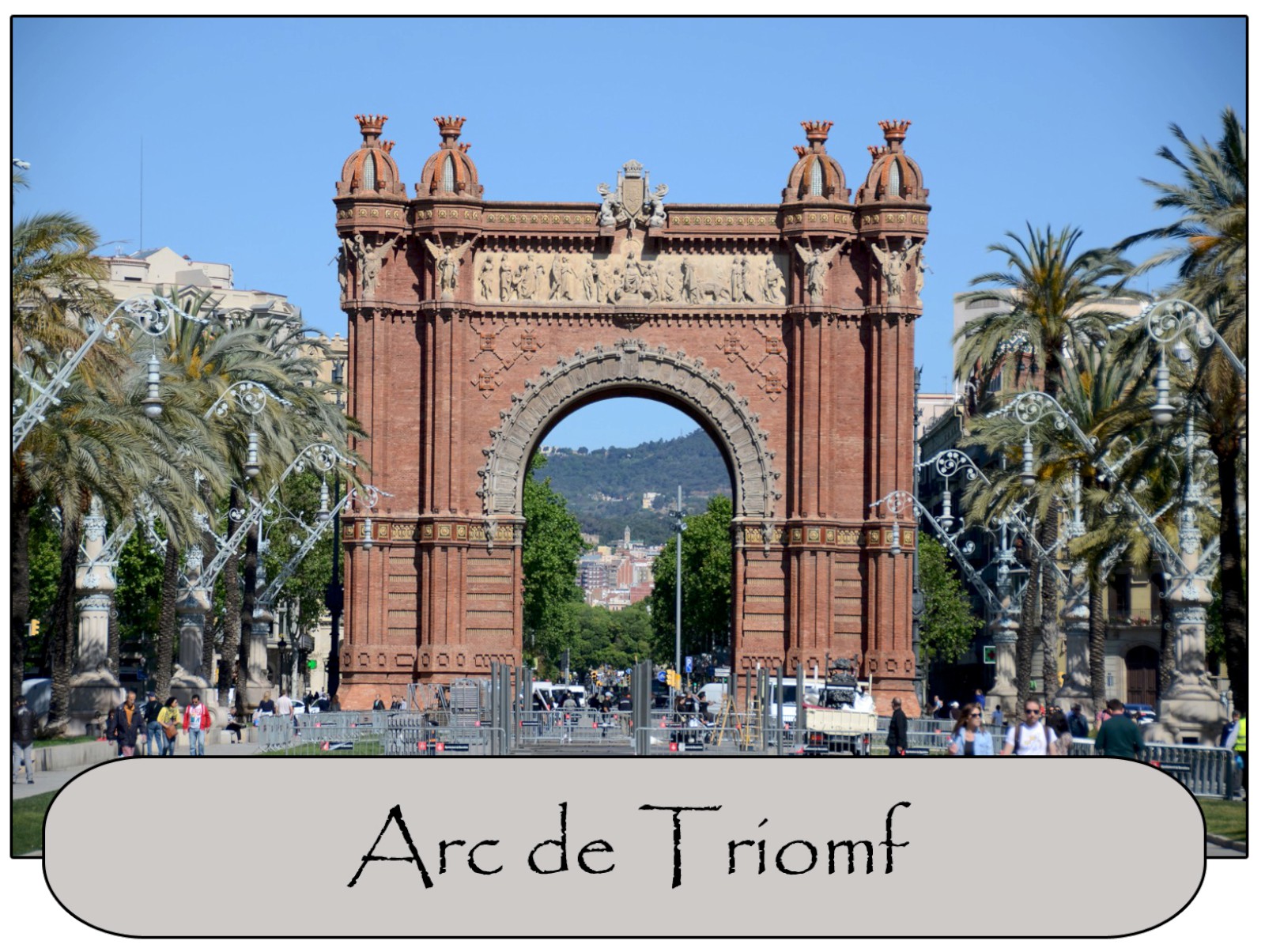
Very interesting.
Thanks Kevin! I am glad that you enjoyed the post.
Great historical place. Great pictures and info.
Thanks Ashoak! Rome is loaded with historical places.